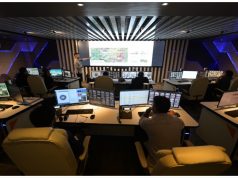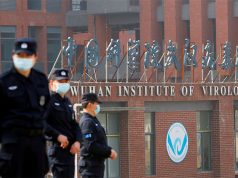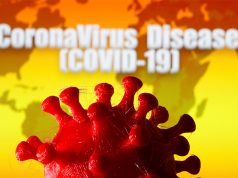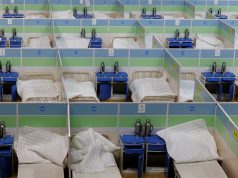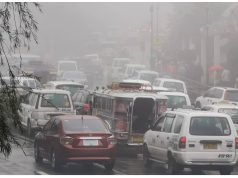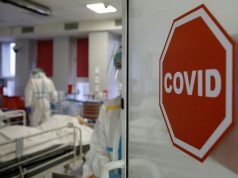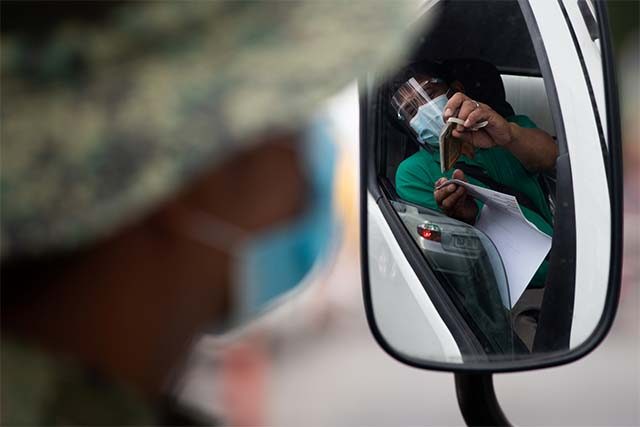
(Updated Aug. 15, 2020; 1:21 a.m.) The Department of Health‘s recent warning against fake contact tracers disclosed that the agency currently does not have its own “team” for contact tracing, an important preventive step against the COVID-19.
In a statement issued on August 10, the DOH said that they received reports about a new scheme wherein some people received calls from supposed members of the health agency’s contact tracing team to extract personal information and exploit money from them.
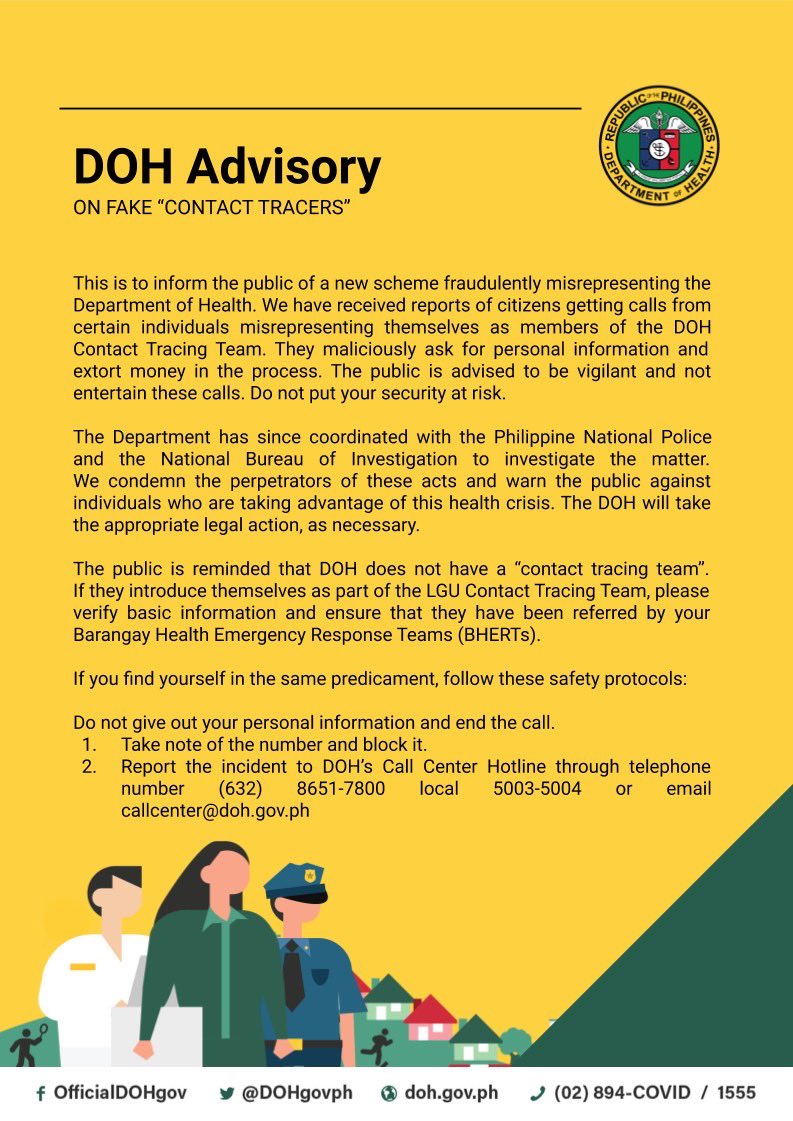
They advised the public against entertaining these calls and then issued a reminder that the DOH does not have an official “team” for contact tracing.
“The public is reminded that DOH does not have a ‘contact tracing team.’ If they introduce themselves as part of the LGU Contact Tracing Team, please verify basic information and ensure that they have been referred by your Barangay Health Emergency Response Teams (BHERTs),” it said.
The DOH also warned the public against other individuals who are taking advantage of the pandemic. It had already coordinated with the Philippine National Police and the National Bureau of Investigation to probe on the matter.
Should they encounter these fraudulent callers, DOH encouraged Filipinos to take note of the phone number and immediately report this via the agency’s official landlines and email address.
Questions on lack of contact tracing team
While the advisory fairly received positive reception on Facebook, some Filipinos on Twitter took notice of the DOH’s admittance that it does not have its own contact tracing team.
Rey Valmores-Salinas of Bahaghari National quote-retweeted DOH’s post about it on Twitter with a meme lifted from the 2004 American movie “Mean Girls.”
The original quote was edited to: “So you agree? You have no contact tracing?”
https://t.co/lJJtRKNH1o pic.twitter.com/lQZaVkJ8v0
— Rey Valmores-Salinas (@rosereyde) August 11, 2020
Another Twitter user highlighted two pressing concerns on DOH’s statement.
“What’s more disturbing: yung nagiimpersonate na DOH contact tracing team or the fact na walang DOH contact tracing team?” the user asked.
Some Filipinos, meanwhile, expressed confusion on the purpose of contact tracers assigned by local government units.
please elaborate so that the people will be advised and not misled. if the doh doesn't have contact tracing team, then sino po ang mga official and legal contact tracers aside from bherts? thank u.
— tpwk (@vmryc) August 11, 2020
Others recalled that the DOH previously announced a budget dedicated to hiring thousands of contact tracers last May.
So what happened to this? pic.twitter.com/DMzvh6L8Fq
— Jam (@Bumbleekate) August 11, 2020
Ano na po nangyari dito pic.twitter.com/Jrp6lAlQop
— kim (@mekkimmy) August 10, 2020
Aside from mass testing, the World Health Organization explained that contact tracing is also an effective public health tool because it can “break” transmissions of the highly contagious disease, thus control outbreaks.
“When systematically applied, contact tracing will break the chains of transmission of infectious disease and is thus an essential public health tool for controlling infectious disease outbreaks,” it said.
“Contact tracing for COVID-19 requires identifying persons who may have been exposed to COVID-19 and following them up daily for 14 days from the last point of exposure,” it added.
The Philippines’ contact tracing efforts
Since last March, the DOH and other related government agencies tasked to handle the country’s pandemic response had been making promises of assigning personnel dedicated to tracing people who have been in close contact with suspected and infected patients.
The health agency even posted a publication material that announced the call for “volunteers” to conduct contact tracing activities.
Help DOH in its contact tracing activities by volunteering as a contact tracer!Know more and sign up at: bit.ly/COVID19PHContactTracing
Posted by Department of Health (Philippines) on Sunday, March 22, 2020
The next month, however, Cabinet Secretary Karlo Nograles said the Inter-Agency Task Force for the Management of Emerging Infectious Diseases (IATF-EID) issued a Resolution 25, that assigns the Department of the Interior and Local Government, in coordination with LGUs, “to lead the contact-tracing efforts of the government.”
The resolution reportedly amends IATF Resolution 22 that initially tasked the Office of Civil Defense to lead the contact-tracing of the government.
The DILG has since hired around 73,000 contact tracers.
It only used to have 52,463 contact tracers in June and planned on increasing it to over 82,000.
Last May, A WHO representative called out the Philippine government for the apparent slow contact tracing efforts that hampered the country’s progress in controlling the spread of COVID-19.
The DOH then announced that it needs 94,000 contact tracers, which corresponded to at least one contact tracer per 800 people.
It allotted a hefty P11.7 billion funding to hire 136,000 contact tracers, an amount questioned in the Senate.
Several people also questioned the health agency last June over its postings asking COVID-19 survivors of their statuses and details. They asked if this is how health authorities conduct contact tracing.
LGUs are main actors and implementers of contact tracing efforts
On Wednesday, Health Undersecretary Maria Rosario Vergeire explained the agency’s latest pronouncement on contact tracing and reiterated that LGUs are now the “main actors and implementers” of contact tracing efforts.
It said that the department provides guidelines for these initiatives.
“Although ang mga contact tracing teams sa baba syempre mga health officers din and barangay health workers na sasamahan minsan ng mga local government officials like PNP and Barangay Health Emergency Response Team. But definitely, DOH, we do not have any contact tracing teams,” Vergeire explained in a briefing.
The health official added that the DOH is forming adhoc contact tracing teams.
“Especially when there are cases na kailangan imbestigahan in close institution magpapadala kami, we will do investigation and that is surveillance. But not really magkaroon kami ng permanent contact tracing teams,” she added.
Meanwhile, Baguio City Mayor Benjamin Magalong was assigned as the “contact tracing czar” late July.
Magalong planned to apply the approach he implemented in the province which was deemed successful to revamp the country’s contact tracing system.
In a radio interview, Magalong said that only 1% out of the nearly 600 LGUs have a “relatively good” system of contact tracing.
“They were concentrating on the number of contact tracers just to comply with it pero hindi naman properly established,” he said, following assessment of online diagnostic questionnaires on the LGUs contact tracing efforts.




